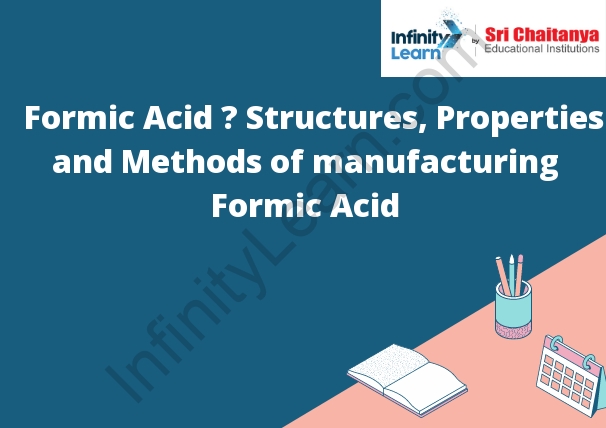Table of Contents
What is Formic Acid?
Formic Acid – Properties: Formic acid is a colorless, corrosive liquid with a pungent, acrid odor. It is the simplest carboxylic acid, consisting of a methyl group attached to a carbonyl group. Formic acid is naturally produced by ants and other insects as a defense against predators. It is also used as a preservative and a cleaning agent.

Formic Acid Structure
Formic acid is a colorless, corrosive liquid with a pungent odor. It is the simplest carboxylic acid, consisting of a methyl group (-CH3) bonded to a formyl group (-CHO). Formic acid is soluble in water and polar organic solvents. The carboxylic acid group (-COOH) and the methyl group (-CH3) are attracted to each other by a hydrogen bond. This gives formic acid a high boiling point and a low freezing point.
Physical Properties of HCOOH
The physical properties of HCOOH are as follows:
- HCOOH is a colorless liquid with a pungent odor.
- It is soluble in water and ethanol, and miscible with ether.
- It has a boiling point of 118.7 degrees Celsius and a melting point of -69.7 degrees Celsius.
- It is a weak acid with a pKa of 3.75.
- It is a weak base with a pKb of 9.23.
- It is a non-polar molecule.
Chemical Properties of Formic Acid
- Formic acid is a colorless, oily liquid with a pungent, irritating odor. It is a weak acid and has a boiling point of 107.5°C (225.5°F) and a melting point of -83.5°C (-118.3°F). Formic acid is miscible with water and ethanol. It is produced commercially by the oxidation of methanol.
- Formic acid is a corrosive acid that can cause skin and eye irritation. It is a weak acid that dissociates in water to release the proton, H+, and the hydroxide ion, OH-. The proton combines with the water molecule to form the hydronium ion, H3O+.
Methods of Manufacturing Formic Acid
- Formic acid can be produced in different ways. The most common is the catalytic hydrogenation of carbon monoxide and methanol.
- Formic acid is a colorless liquid with a pungent, vinegar-like odor. It is miscible with water and ethanol, and slightly soluble in ether. In water, it ionizes to give the protonated form H+ and the acetate anion, CH 3 CO 2 −.
- Formic acid is the simplest carboxylic acid. The carboxyl group, COOH, is a carboxylic acid functional group. In formic acid, this group is bonded to a hydrogen atom. Carboxylic acids are widely used in organic chemistry. They are used to make esters, which are important in the synthesis of many drugs, and they are also used to make amino acids, the building blocks of proteins.







